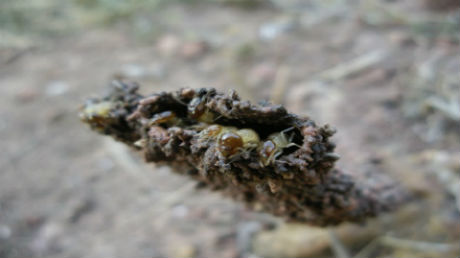Termite inspections play a pivotal role in keeping your home well maintained. It isn’t always easy to spot an infestation, and a lot of damage can be done before any signs are visible to the naked eye. Having a professionally trained technician perform a yearly termite inspection can save you thousands in the long run.
There are three main termite types – dampwood, drywood, and subterranean – each type lives in different geographic regions. Termites spend 24-hours a day, seven days a week eating away at wood and other materials such as paper, plastic, and drywall.
Termites are small insects that typically grow to be half an inch long. They live in groups called colonies, and much like bees, a majority of termites in a colony are ‘worker’ termites, ruled by a single queen. Colonies live in nests or mounds built by these worker termites. Since they build their nests by tunneling, a majority of the damage to a structure is internal. This is why damage can be so devastating if a nest is built within the wooden structure of buildings and homes. It isn’t until the structural integrity of the wood has been compromised that most people realize they have a termite problem.
It is estimated that termites cause an average of $5 billion dollars in damage to man-made structures in the U.S. every year. A typical homeowner will pay upwards of $3,000 to repair damage caused by termites. However, by having a yearly inspection done by a trained professional, these statistics can be dramatically reduced.
During a termite inspection, a trained professional will look for 3 things:
- Signs of swarmers. Termite colonies begin new colonies when the queen releases a swarm of mature, flying, adults. An inspector will look for signs of swarmers near window sills and door opening and in spider webs where they may have become trapped.
- Mud Tubes. When termites encounter a roadblock on their way to a larger food source they will create tubes to travel in. Termites thrive in humid environments so they use the tubes to keep the humidity level around them high as they travel over open and exposed spaces such as concrete.
- Damage. Wood fencing, mulch, firewood, fallen timber, and outdoor structures such as decks and playsets are the perfect location for termite colonies to form. Your inspector will take a thorough look at these for signs of termite activity. A good inspector will also be able to tap and test wooden structures and determine termite activity based on the sound and any disintegration.
If you are concerned about the damage termites can cause, and want to ensure that your home/office is termite free call the trained professionals at May Exterminating, 910-455-5888.


Recent Comments